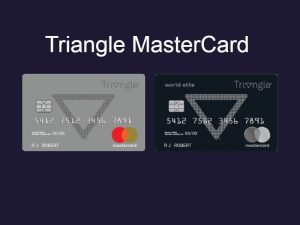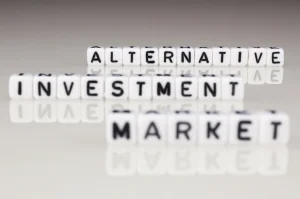Investing in Luxury Assets in Canada
A Deep Dive into Classic Cars, Art, and Collectibles
When we think of investment opportunities, stocks, bonds, or real estate often come to mind. However, there’s another world of investments that not only offers the potential for significant returns but also provides personal enjoyment: luxury assets. In Canada, luxury investments like classic cars, fine art, and collectibles are gaining popularity, especially among high-net-worth individuals looking to diversify their portfolios. But how do these investments stack up against traditional asset classes, and what should Canadian investors consider before diving in?
The Allure of Classic Cars
Classic cars hold a unique position in the luxury investment market due to their cultural and historical significance. Vehicles like the 1960s Ferrari 250 GTO or the Porsche 911 are not only symbols of style but can also yield high returns over time, with the right conditions. According to historical data, well-maintained, rare models can see an appreciation of up to 20% annually, especially if they’re in mint condition and come with a verifiable history.
Factors influencing a classic car’s value:
- Rarity: How many were produced, and how many are still in existence?
- Condition: Original parts and excellent upkeep dramatically boost value.
- Historical Significance: If the car has an iconic status or has appeared in notable races or films, it can add to its value.
- Market Demand: The collector community’s interest can fluctuate with trends, so timing is crucial.
However, it’s important to note that classic car investments come with significant upkeep costs. Storage, maintenance, and insurance can eat into profits. In Canada, classic cars are subject to property tax, and any sale that results in a gain is taxed at the capital gains rate of 28%(Benzinga)
. The passion behind owning such a vehicle should be weighed against the practicality of its long-term appreciation.
Fine Art: A Unique Hedge Against Inflation
Fine art has historically proven itself as a stable investment, often acting as a hedge against inflation. In Canada, the art market is growing, with works from both established and emerging artists finding increased value at auctions. Canadian artists such as Emily Carr, Lawren Harris, and Jean-Paul Riopelle have seen their works appreciate significantly, driven by both domestic interest and international buyers.
When investing in art, Canadian investors should consider:
- Artist Reputation: Established names with a strong market presence are often safer bets.
- Provenance and Authenticity: Ensuring that the artwork has a clear history is crucial for both valuation and future sale.
- Market Trends: Art, like any other luxury item, follows trends. Understanding what’s in demand—whether contemporary art or pieces from specific movements—is key.
From a tax perspective, artwork is treated as “listed personal property” in Canada. Gains from the sale of art are taxed as capital gains, but any losses incurred can only be used to offset gains from other “listed personal properties,” such as rare coins or manuscripts(CIBC). If the value of the artwork exceeds $1,000, any sale or transfer of ownership may trigger tax implications.
Collectibles: Coins, Stamps, and Rare Books
While coins, stamps, and rare books may seem niche, they are a significant part of the luxury asset investment world. These collectibles have the advantage of being more accessible, with some entry points starting as low as a few hundred dollars. However, rare items—especially complete collections or one-of-a-kind pieces—can sell for millions. For example, rare coins such as the Canadian Silver Dollar or limited-edition stamps have seen consistent growth in value over time.
One advantage of collectibles is their portability and ease of storage compared to classic cars or large artworks. However, like with other luxury assets, Canadian investors must be aware of the tax implications. Collectibles are subject to capital gains tax, and while losses on some items cannot offset gains, those classified as “listed personal property” allow for this offset, offering some flexibility in the tax strategy.
Actionable Steps to Get Started in Luxury Asset Investment
If you’re considering stepping into the world of luxury investments, it’s crucial to have a roadmap. Here’s a quick guide to help you get started:
1. Start with Research: Before diving into any luxury asset, start by learning about the specific market. Classic car enthusiasts often rely on platforms like Hagerty or RM Sotheby’s, which offer resources, auctions, and insurance information for valuable vehicles. Similarly, fine art investors can look to Sotheby’s or Christie’s auction houses for insights into the art market, and collectors of coins or stamps should investigate niche dealers or historical marketplaces like Heritage Auctions.
2. Set a Budget: Luxury assets come with significant upfront costs, and in many cases, they can require ongoing maintenance (such as with classic cars). Make sure you have a well-defined budget that won’t negatively impact your liquid investments like stocks or bonds. A good rule of thumb is to allocate no more than 10% to 20% of your overall portfolio to luxury investments, especially at the beginning.
3. Diversify: Just as with traditional investments, diversification is key. Don’t put all your funds into a single asset class like classic cars or fine art. If you have a passion for multiple categories (such as cars, art, and coins), spread your investments across different types to mitigate risk.
4. Consult Experts: Luxury assets are often illiquid and can be harder to value than traditional stocks or real estate. Before purchasing, it’s advisable to consult appraisers or industry experts who specialize in your specific area of interest. For example, classic car specialists or fine art dealers can give insights into market trends and help assess the true value of an item.
5. Consider Long-Term Holding: Luxury assets aren’t the kind of investment that you flip overnight. They often require a long-term view to see substantial returns. Whether it’s a classic car, a piece of fine art, or a rare coin, patience is key to ensuring you maximize your investment potential.
Adding these actionable steps will help beginners take confident steps toward luxury asset investment. It’s essential to research, budget, diversify, and seek expert guidance before diving in. Doing so ensures you don’t just invest emotionally but also make informed, strategic decisions that pay off in the long run.
Diversifying Your Investment Portfolio
One of the main benefits of investing in luxury assets is diversification. These assets don’t tend to move in the same cycles as traditional financial markets, meaning they can provide a hedge during economic downturns. However, investing in luxury assets should be approached with caution. Unlike stocks or bonds, luxury assets don’t generate cash flow and require a long-term perspective to see substantial returns.
In addition, luxury asset markets can be illiquid, meaning it might take time to find the right buyer when you want to sell. Understanding both the risks and rewards is crucial for anyone looking to enter this niche market.
Final Thoughts: Should You Invest in Luxury Assets?
Investing in classic cars, fine art, or collectibles in Canada can be incredibly rewarding—both financially and emotionally. However, it requires research, patience, and a clear understanding of the tax implications. Whether you’re looking to add a touch of personal passion to your portfolio or seeking a hedge against traditional investments, luxury assets offer a unique path for Canadian investors. Just be sure to consult with experts in each field, and keep the long-term view in mind as you navigate this intricate market.
By integrating luxury assets into a well-balanced portfolio, Canadian investors can enjoy the thrill of ownership while also benefiting from potential capital appreciation. If approached strategically, the world of luxury assets can provide not just financial returns, but also deep personal satisfaction.








